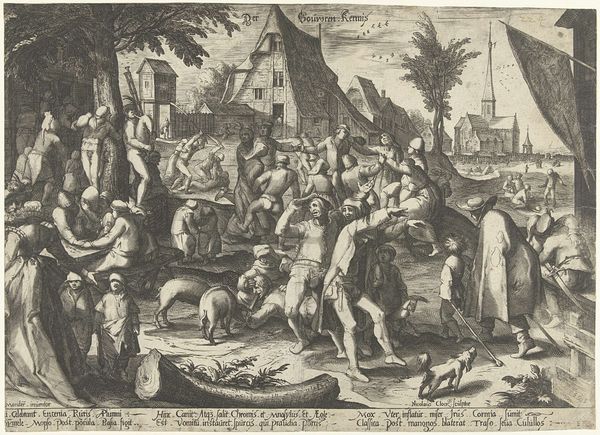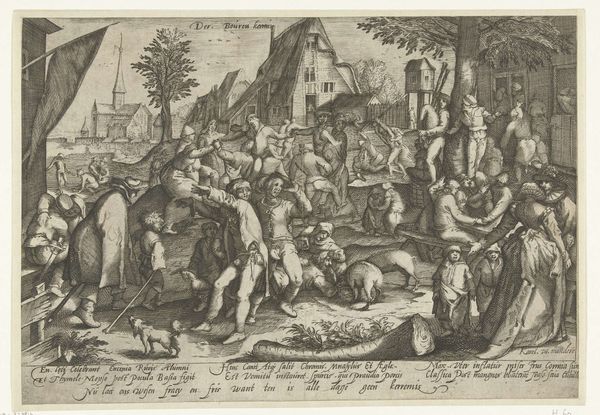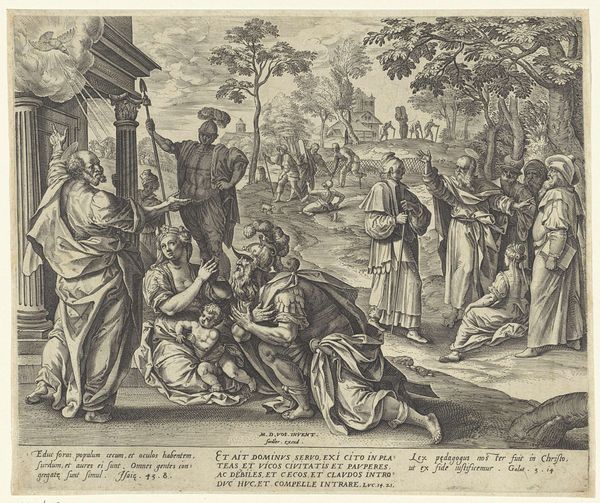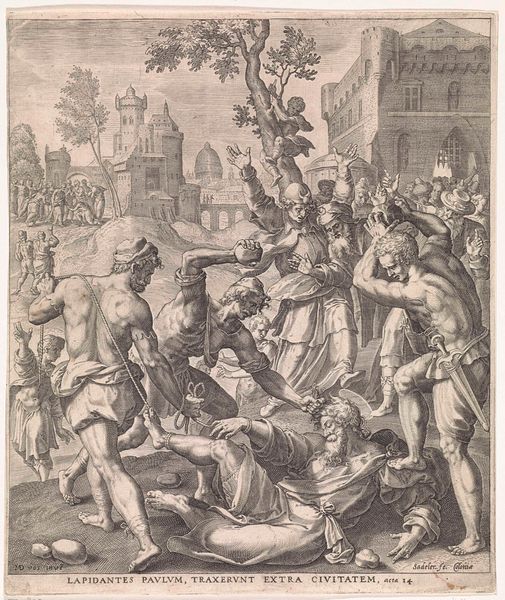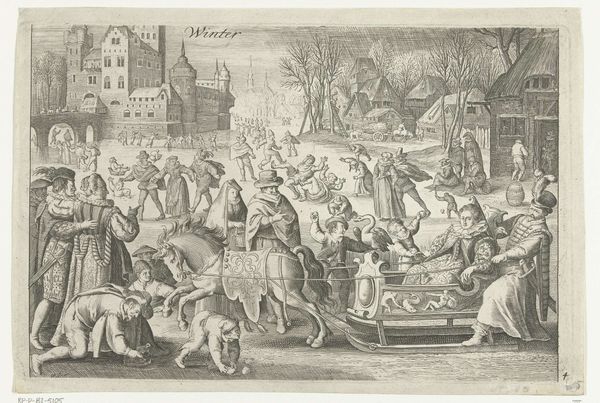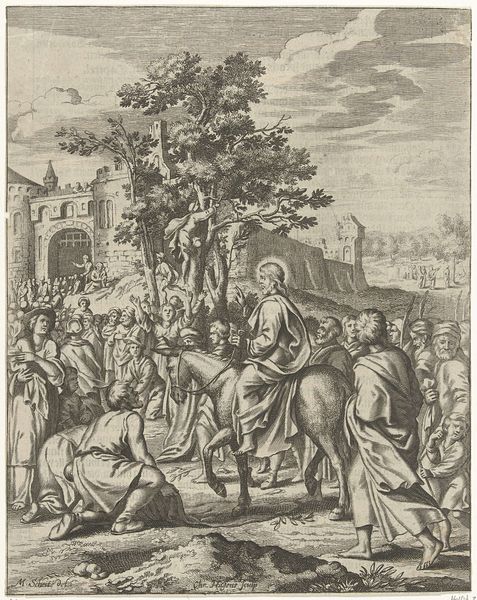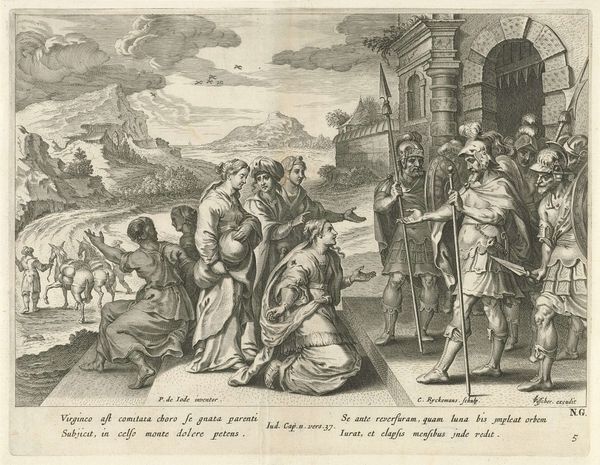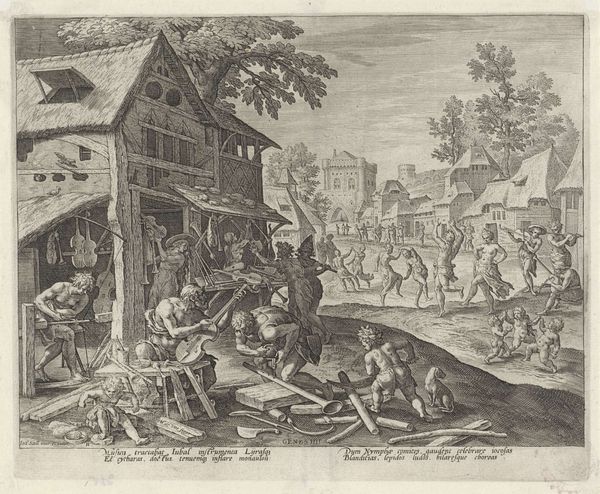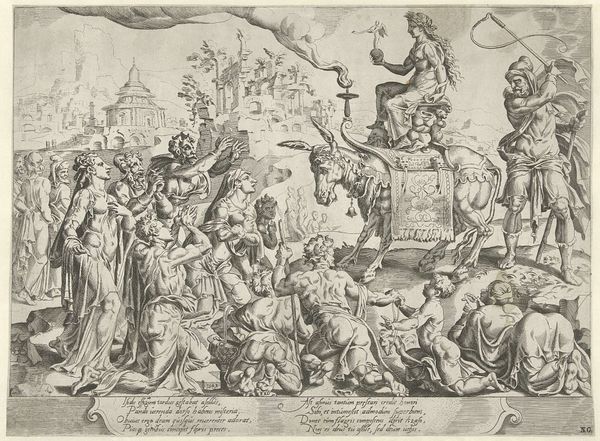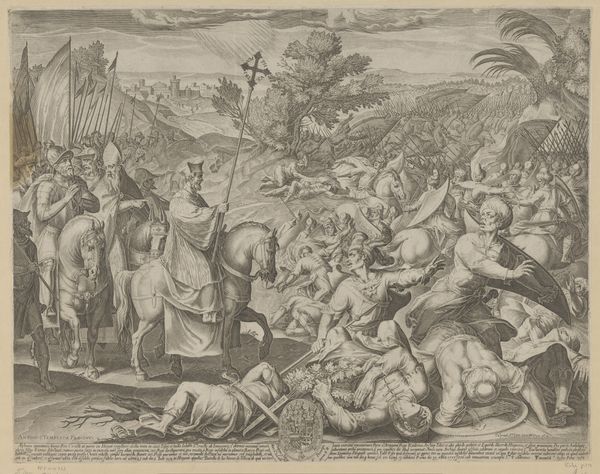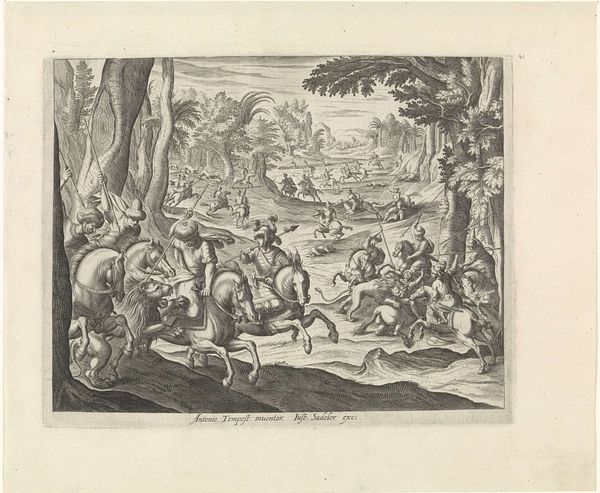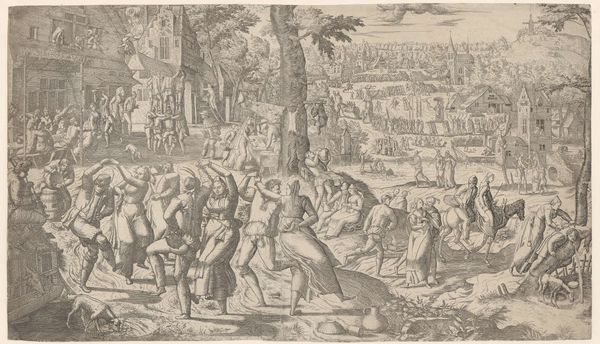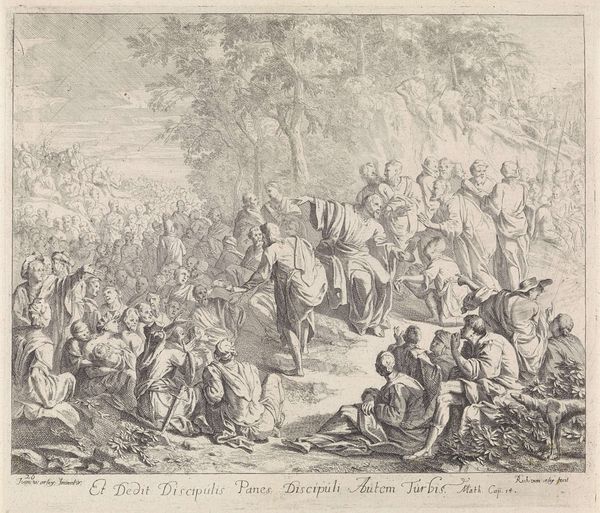
drawing, print, engraving
#
drawing
#
narrative-art
# print
#
landscape
#
charcoal drawing
#
mannerism
#
figuration
#
genre-painting
#
northern-renaissance
#
engraving
Dimensions: height 284 mm, width 406 mm
Copyright: Rijks Museum: Open Domain
Karel van Mander the Elder created this pen and gray ink drawing called Boerenkermis, or Peasant Festival, during the late 16th, early 17th century. It illustrates a village fair, a traditional form of celebration in the Low Countries. Such scenes of peasant life were popular in Netherlandish art. This drawing might reflect contemporary social tensions, capturing the essence of rural festivities while also perhaps subtly critiquing the behavior of the lower classes, offering a moral lesson to its elite audience. It's worth noting the context in which Van Mander was working. The Netherlands was undergoing significant social and political changes. The Dutch Revolt against Spanish rule led to new forms of self-governance and civic identity. To understand fully the cultural meanings embedded in artworks such as this, historians draw upon various archival sources, including emblem books, folklore studies, and records of festive traditions. This helps us to appreciate the complex social meanings conveyed through the imagery of this era.
Comments
No comments
Be the first to comment and join the conversation on the ultimate creative platform.
